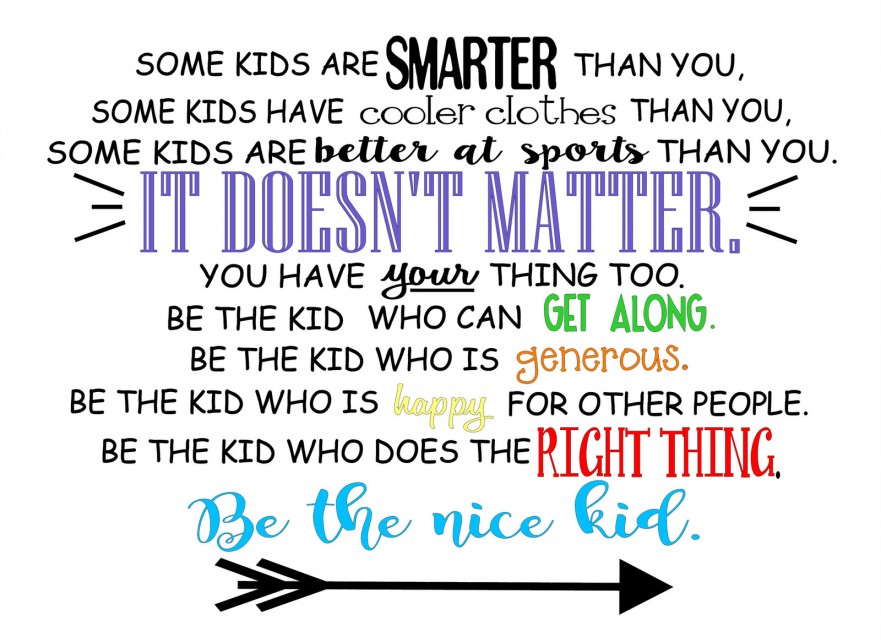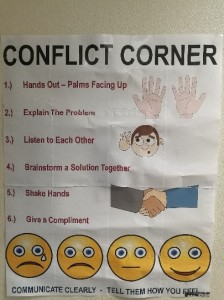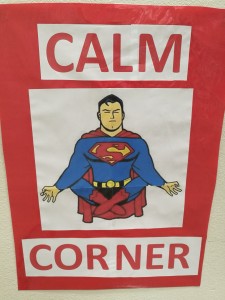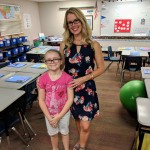It is the night before the first day of school. You are a prepared teacher. You have great lessons ready for your students. Everything is printed and ready to go. Yet, you still feel worried. What if this math lesson doesn’t work on the first day? Maybe not a popular take, but “Who cares?” That is not important right now. For the first few days of school, bury the curriculum.
Students should be the worried ones. For some of them, school is new and unfamiliar. They might not know anyone. There could be many questions that run through students’ minds: Why am I here? What do I do if a kid pushes me? Will I have friends to play with at recess? If I get frustrated, what can I do? What if my parents forget to pick me up? These are all valid questions. I don’t blame students if they are nervous or hesitant for the first few days of school. Heck, if I was 5 and heading to my first day of kindergarten, I would be scared, too! Notice how none of the above questions have anything to do with math, reading, writing, science, or social studies. Why? Students don’t care about that… yet. They aren’t essential for the first few days. Their physical and emotional needs must be met before any content is taught. Relationships must be established. Students want to feel loved, safe, and comfortable. As teachers, we are adults who know how to conduct ourselves. We know how to handle adversity and uncertainty. So, how nervous should we really be?
Physical education class is a unique opportunity to embed social emotional learning into each lesson. We work on teamwork, cooperation, and positive communication for the entire first month of school. We play games like “Cross the River”, where students collaborate and come up with strategies to get their entire team across the river safely using various equipment. We also play “Line Your Manners”, where students practice approaching others, greeting them with a hand shake, problem solving using “Rock, Paper, Scissors”, and showing empathy as the winner lets the other pass. By proactively teaching these practical, lifelong skills, future issues are few and far between. Kicking, dribbling, and fitness concepts are buried. When students’ physical and emotional needs are met, I will teach those skills.
Teaching students coping skills the first few days can help students handle potential future issues. Posters like the “Calm Corner” and “Conflict Corner” have drastically improved my students’ ability to self-regulate their emotions and problem-solve. They realize they don’t need me to solve everything. After all, they will have to do this on their own in the real-world, so I might as well prepare them now. These skills are significant and can be transferred to other settings. When in a job interview, the interviewer wants to know how you solve problems, how you communicate with others, how you are responsible to get your work done.
We consistently review how easy it is to be kind and that it takes no superhero power. We discuss how being kind is contagious and how it is a win-win for all. To help students feel loved and safe, I take time to get to know each child individually. I ask them questions like : “What is your most memorable moment? Why?” or “What do you like best about PE?” This shows them I care about them and that they are safe with me. As teachers, let’s be brave for our students. Let’s focus on the relationships and create powerful moments our students will remember for a lifetime. Ten years from now, they might not remember each lesson you taught them, but they will remember how you made them feel.
Let’s put “first things first”. Before anything else, ensure students feel loved, safe, and comfortable in your class. For the first few days, invest your time in establishing relationships and building a loving classroom climate. Bury the curriculum.












Comments 3
“As teachers, let’s be brave for our students. Let’s focus on the relationships and create powerful moments our students will remember for a lifetime.” I love this. Relationships are how we reach our students, and how they will forge their future in the world.
It’s the type of activities you use that make a class a place where students want to be. Even a couple of “off-curriculum” practices can make a world of difference in a class’s climate.
Author
Absolutely! Thanks for the reply, August.